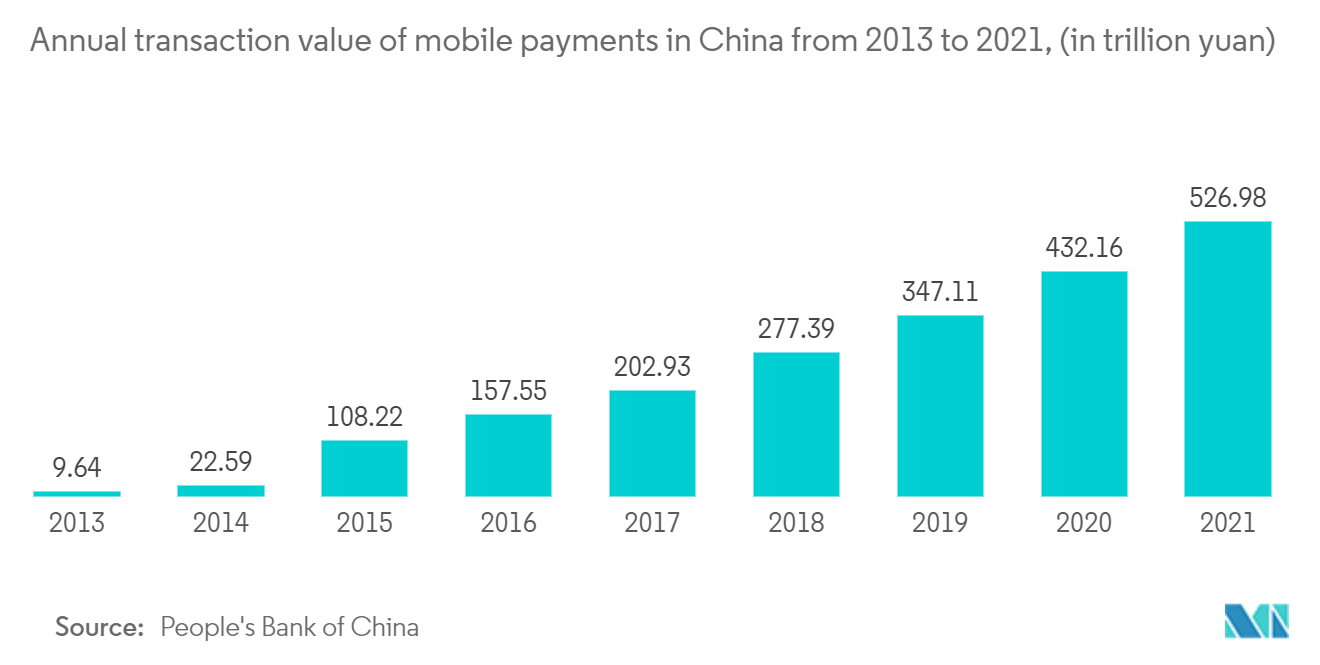Market Trends of APAC Loyalty Management Industry
BFSI Segment is Expected to Witness the Highest Growth
- In a highly competitive, complex, and dynamic banking industry, slight differences in financial services and products can matter. Most banks are trying to be "ideal" for their customers in exchange for trusted and profitable relationships. This, together with an increasingly demanding customer base, has led to the industry's transformation toward adopting loyalty management solutions.
- Card transactions are growing quickly in the APAC region, especially in countries like India, China, and Japan.The growth in card transactions is fueled by lifestyle shopping due to rising middle-class incomes, presenting significant growth potential for loyalty programs.
- With more competition and customers who are quick to switch banks if their current ones aren't helpful, banks are making loyalty programs that are completely tailored to each customer.
- Various regional BFSI companies are raising investments to maintain their market position. For instance, in October last year, Juno, a Singapore-based crypto banking business, secured USD 18 million in a Series A fundraising round and introduced JCOIN, a loyalty token. According to CoinDesk, the investment will be used to extend and enhance the company's product suite and operations and promote the introduction of its loyalty token, Juno Coin (JCOIN), which will be available to verified account users.
- Also, as more banks and financial institutions open in places like Singapore, India, China, and others, the demand for loyalty management in the region is likely to rise.
- The market is also seeing companies from different industries work together to launch loyalty programs, and loyalty programs are becoming more popular in the financial sector. For instance, OCBC Bank and Star Hub are jointly developing Singapore's loyalty alliance so that Singaporean customers will be able to exchange, consolidate, and redeem loyalty rewards, such as reward points and air miles, earned from market-leading partners across industries.

China Occupies the Largest Market Share
- Retail loyalty programs are well established in China, dating back to the mid-to-late 1990s. Although participation is lower in China (61% of consumers) due to collectivist consumer behavior, Chinese retailers now focus more on loyalty programs.
- The China Internet Network Information Centre says that as of December 2021, nearly 842 million Chinese people had done business online. This is a 38% increase from 2018.With online sales growing so quickly, e-commerce platforms and other businesses can offer loyalty programs to make more money.This will bring in technologies for loyalty management platforms that will let online businesses make and run reward programs.
- In China, e-commerce has grown a lot in the last two or three years, and with it, the loyalty and rewards programs business has grown a lot as well.Also, e-commerce platforms for more than one type of product started offering loyalty programs to gain market share and make more money.When compared to Western norms, these campaigns had positive outcomes for e-commerce players.
- KFC China announced in December 2021 that it would start a three-week green incentives program to encourage and reward customers for doing things that help cut down on carbon.Customers are given rewards for things like ordering on their phones, not using disposable cutlery, wasting less food, canceling orders, and picking up their food in the store.
- E-commerce companies are also working with technology companies to improve their loyalty programs and get a bigger share of the market. For example, to get ahead of Alibaba, JD.com teamed up with Walmart and Tencent Holdings to share customer data and operational systems. Walmart and JD.com integrated their customer loyalty systems for stores in China (where Walmart has 400 stores). Therefore, the increased average consumer spending has resulted in increased loyalty programs retailers offer.


